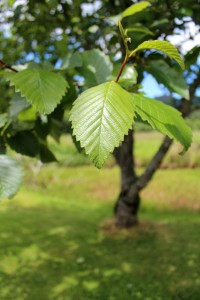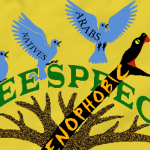Recently, a study was published in the journal Trends in Plant Science that suggests that plants “talk” to each other. The researchers observed plants making clicking noises, and when the same clicks were artificially reproduced the roots of new seedlings grew towards them. (The article itself may be found here in PDF form, for those interested.)
This is all well and good. However, the researchers then proceeded to jump to conclusions about the significance of the correlation between the clicking and root growth, even using the term “talking” in reference to the clicking, as well as other anthropomorphic language. As anyone with even a basic understanding of research methodology knows, correlation does not equal causation, and one run of an experiment does not equal a sound theory. Note also that the paper did not publish the details of the study, such as the performance of the control group (if there was one), or any statistical analyses of the results. In short, the paper can be summed up as “We played some sounds, and the roots grew this way, so we assume that one caused the other, and what’s a confound anyway?”

Why is this important to nature-based spirituality? After all, spirituality isn’t supposed to be scientific, right? And yet you would be hard-pressed to find a pagan who believes evolution is a lie, or that we’re sticking to the Earth not because of gravity but because Gaia just wants to give us all a big, life-long hug. I’ve yet to meet a pagan creationist. To one degree or another, pagans generally subscribe to the sciences, and maybe nature-based pagans even more so on average.
Which is fine, so long as we remember that our spiritual beliefs are largely subjective, and not provable in the same objective, measurable way that the effectiveness of antibiotics or explorations of the Large Hadron Collider are. You can’t measure the existence of a god or spirit (collective gnosis doesn’t count as scientific evidence, as it’s group confirmation bias), and there are no peer-reviewed, well-constructed scientific studies that undeniably prove the objective effectiveness of magic. I believe that I can communicate with the spirits of plants, and perhaps on some level I’m communicating with the physical plant itself. But this doesn’t make for incontrovertible proof that I am communicating with plants instead of just a conversation with myself and an imaginary plant being in my head.
So why hang onto spirituality? That (imaginary?) conversation has benefits that I can feel personally, and there are studies that suggest spirituality can be beneficial on a psychological level. It appeals to my love and need of large-scale storytelling as a way of connecting to the world around me in personally meaningful ways. Ritual answers the need to imagine and play, what Joseph Camobell was referring to when he talked about Huizinga’s concept “Homo ludens” in myth and ceremony. Just because the stories and myths aren’t provable in any objective way doesn’t mean they aren’t valuable. My continuing exploration into plant totemism and similar eco-spirituality is just one manifestation thereof. So I keep my plant totemism in its own compartment of “real or not”, and I don’t try to extend it as proof that plants are conscious in the same way that I am.

And I think sometimes modern pagans are so focused on trying to find the fairies in the garden, and use questionable science to try to prove that those fairies are really, really real, that they ignore scientific protocol. It would be great if we could find ways to communicate with plants, just as we’re finding ways to communicate with some species of animals on their own terms. But we do ourselves no favors if we grasp at the straws of bad research and confirmation bias instead of being more patient and waiting for more incontrovertible evidence. Articles like the aforementioned are the equivalent of the Cottingley fairy photos–they do nothing but discredit the people and efforts associated with them, and make it more challenging to sort the wheat from the chaff.
So we can continue to have plant spirits and totems, and gods of the harvest and field. There’s nothing wrong with that. But let’s not use half-arsed studies about “talking plants” to try to prove that the spirits of nature paganism are more real than any other. Better to have no proof and only have our spirituality be true in our hearts, than to root our proof on a crumbling cliffside, only to have the tree fall over in the end.
(Note: if you’re interested, I wrote more about scientific methodology and its importance to spirituality on my own blog a while back)











